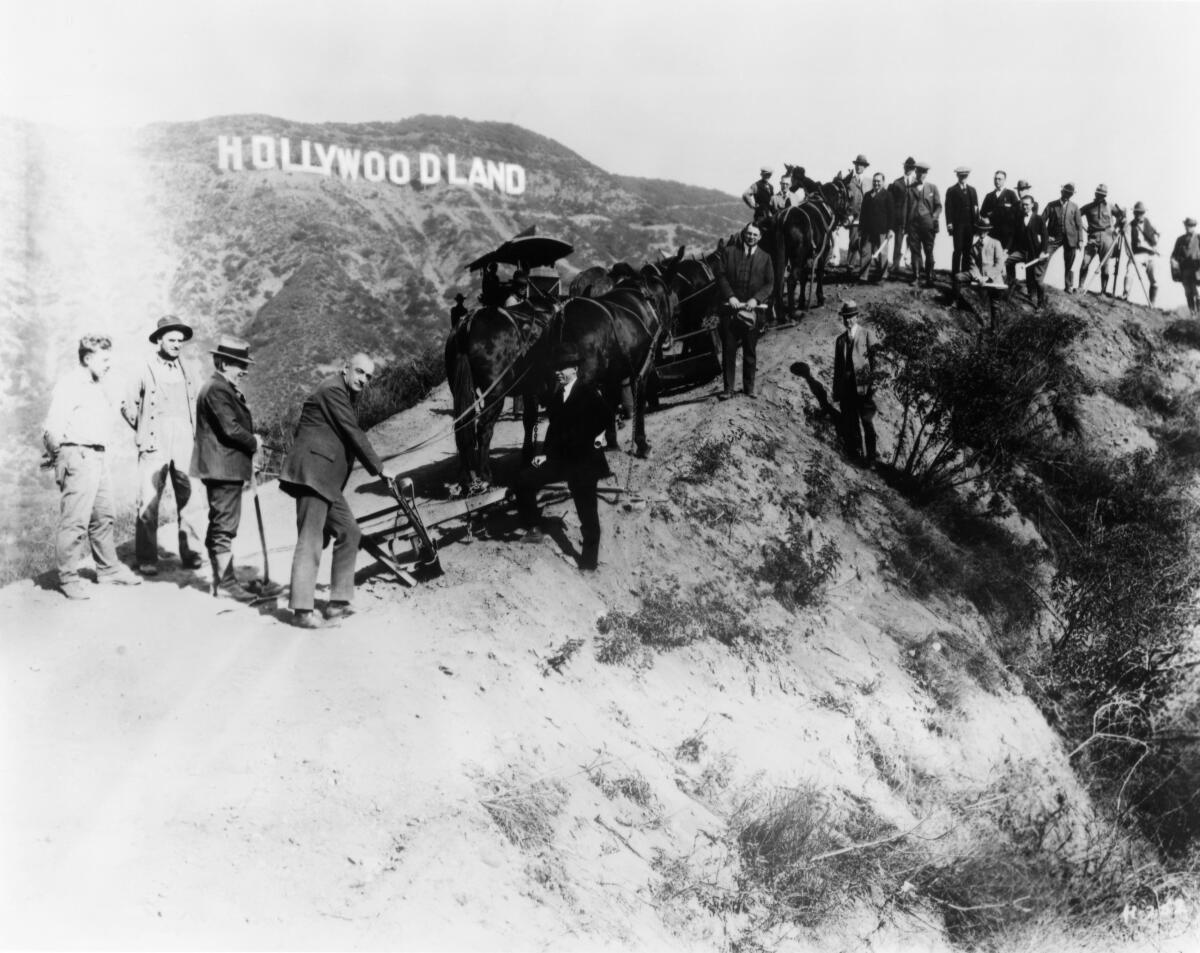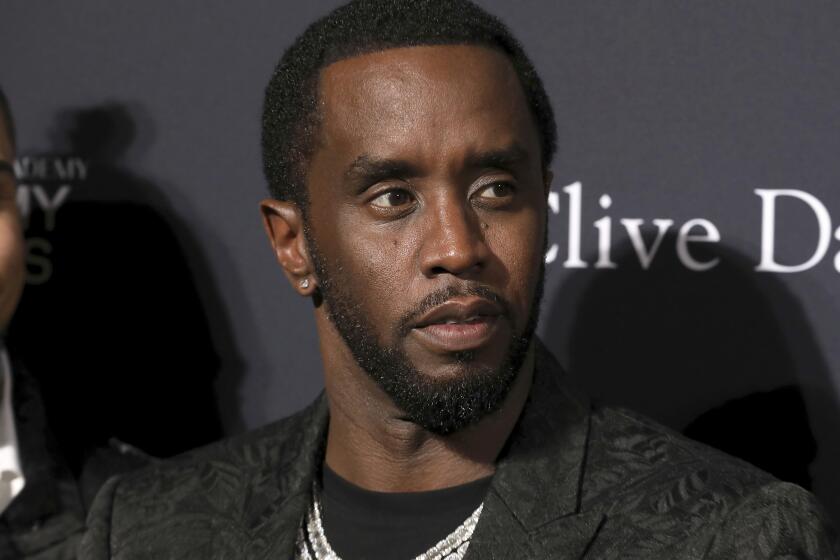How L.A. was built (and rebuilt) to burn

- Share via
Good morning. Here’s what you need to know to start your day.
- Fires are nothing new to L.A., but hillside homes continue to be built.
- Will Trump have a chilling effect on Hollywood? Insiders say it’s already happening.
- Have recent crashes heightened your flight anxiety? Try these 5 tips to keep calm and fly on.
- And here’s today’s e-newspaper.
You're reading the Essential California newsletter
The most important California stories and recommendations in your inbox every morning.
You may occasionally receive promotional content from the Los Angeles Times.
Built (and rebuilt) to burn
Last month’s deadly Palisades and Eaton fires were a tragic reminder that fire is woven into the fabric of Southern California’s landscape.
As authorities clear out the ash-laden debris and pave the way for residents to rebuild their homes and livelihoods, some are asking familiar questions: Should we build differently this time? Or should we not build in the most fire-prone landscapes anymore?
The devastation — searingly fresh and life-changing as it is for tens of thousands who lost their homes — and the reckoning that’s followed are also déjà vu.

“It’s a crossroads the region has found itself at before when the power of fire left us reeling,” Times national correspondent Jenny Jarvie wrote this week as she dived into L.A.’s fiery history.
She revealed how city leaders, developers and the public failed to truly learn the lessons emblazoned into the landscape time and time again.
Bel-Air fire
In 1961, Santa Ana winds pushed a small trash fire into the wealthy neighborhood of Bel-Air. News coverage at the time chronicled celebrities armed with garden hoses dousing their roofs in hopes that their homes would be spared — echoed in the efforts by residents in Pacific Palisades and Altadena last month.

The blaze destroyed more than 480 homes, some of which belonged to Hollywood elites including Burt Lancaster and Zsa Zsa Gabor.
“In response, L.A. officials ushered in new fire safety measures, investing in more firefighting helicopters, new fire stations and a new reservoir,” Jarvie wrote. “They also outlawed untreated wood shingles in high-fire-risk areas and initiated a brush clearance program to create defensible space around homes.”
But the hillside homes kept getting built. A reckoning or a half-measure?
A century of hillside development
The L.A. Basin’s hilly terrain has been beckoning to people for more than 100 years.
“All over the mountains surrounding L.A., developers were buying up ranchland, filing plat maps and producing lavish real estate ads and sales brochures touting the foothills as an elevated paradise for a newly emerging upper middle class,” Jarvie wrote.
One 1923 advertisement for new development in what was then called Hollywoodland proclaimed: “The future of Los Angeles is in the hills.”
But something that and other ads of the era did not mention: the risk of fire.

“It was a period of almost zero environmental consciousness,” Philip Ethington, a professor of history, political science and spatial sciences at USC, told Jarvie. “The developers didn’t want to dwell on the hazards. They saw fires as freak events.”
The inconvenient truth they couldn’t or wouldn’t see (and one many still look past today): Fire is the native, natural presence, and human development is the invasive interloper. Our efforts to suppress that nature have only made fires worse, according to experts.
“We don’t want our natural areas to get affected by fire,” Monalisa Chatterjee, a climate scientist and associate professor of environmental studies at USC Dornsife, told me last month. “But in reality, this is a fire-prone place. It requires fire. … We are not allowing a natural process to happen.”
Where we’ve built raises the risk, she explained, along with what we’ve planted. As L.A. grew, so did a number of nonnative species that aren’t as fire-resistant, creating fuel sources and ember factories when fire inevitably comes (looking at you, palms).
Will this latest destructive lesson change anything?
It feels like I know the depressing answer, though I’d love to be wrong.
For decades, we built into wild spaces while stifling the Indigenous fire practices that strove for balance, not 100% suppression. Some fire agencies have started to embrace that historical approach, and state leaders are focusing on new laws to make homes more resistant to fire.
At the same time, those state and local leaders have moved to expedite the rebuilding process by waiving some environmental and regulatory steps.
All the while, experts emphasize that fire is the constant and our presence and actions — including human-caused climate change — are the variables that spark destruction.
“California is built to burn … on a large scale and explosively at times,” Stephen Pyne, a fire historian and professor emeritus at Arizona State University, told Jarvie.
“You can live in that landscape, but how you choose to live will affect whether that fire is something that just passes through like a big thunderstorm, or whether it is something that destroys whatever you’ve got.”
Read more from Jarvie’s story on L.A.’s history of building and burning and rebuilding.
Today’s top stories

Food-service industry workers brace for the Trump administration’s immigration crackdown
- Restaurant workers and customers are afraid to lead normal lives with an increase in ICE raids expected as part of Trump’s heightened immigration enforcement.
- An estimated 1 million people who are in the country without legal status work in the restaurant industry.
- Some food-service workers are no longer driving and instead are taking Uber to their restaurant jobs.
California lawmakers will crack down on the sale of puppies from out-of-state mass breeders
- An L.A. Times investigation last year found that truckloads of doodles, French bulldogs and other expensive dogs from profit-driven mass breeders pour into the state from the Midwest, feeding an underground market where they are resold by people claiming to be small, local home breeders.
- Now, state lawmakers propose three bills to crack down on the sale of puppies from out-of-state mass breeders.
What else is going on
- Southern California’s strongest storm of the winter is here: ‘High risk of flooding, debris flow.’
- The worst flu season in years swamps California: ‘Particularly long and difficult.’
- The 51st state? Canadians say no, thanks. They don’t want U.S. products either.
- LAUSD misused millions in taxpayer-approved money meant for arts education, a suit alleges.
- Stay or go? Residents wonder whether Altadena’s spirit can survive a rebuild.
- Ye, formerly known as Kanye West, called himself ‘Hitler’ and was abusive to an ex-employee, a lawsuit alleges.
- At the Getty Villa, the marvelous exhibition rescued from the Palisades fire.
- Compton Unified stands out as a national leader in raising student test scores.
- News anchor Ellen Leyva is leaving KABC after nearly 30 years.
- Northern California’s famed ‘Glory Hole’ spillway is used for first time in years.
- Russia has released detained American teacher Marc Fogel, the White House says.
- Earth’s inner core isn’t just slowing, it’s also shape-shifting, a study finds.
- Scientists say several thousand earthquakes have been detected near Greece’s island of Santorini.
- What to know about proposals to ban abortion pills and punish women who seek abortions.
Get unlimited access to the Los Angeles Times. Subscribe here.
Commentary and opinions
- In aftermath of fires, consultants might help, but L.A. needs someone to lead, columnist Steve Lopez writes.
- Make America safe again? Not like this, writes columnist Jackie Calmes.
- Columnist Gustavo Arellano chats with professor Denise Sandoval, who is perhaps the premier scholar on lowrider culture and also an exemplar of what an academic should be.
- Rather than confronting Trump, California’s governor is showing restraint and using flattery to ensure the state gets the federal disaster relief it needs and deserves. That’s a smart strategy, columnist Mark Z. Barabak writes.
- Democrats who make nice with Trump aren’t helping on climate, columnist Sammy Roth writes.
This morning’s must reads

Inside the bare-knuckle legal brawl between Blake Lively and Justin Baldoni. The Blake Lively-Justin Baldoni saga has highlighted not only the dark arts of Hollywood publicity, but also the role of high-profile celebrity attorneys and the increasingly aggressive tactics they use to defend their clients.
Other must reads
- Panamanians say the canal is theirs and always will be.
- Will Trump have a chilling effect on Hollywood? Insiders say it’s already happening.
How can we make this newsletter more useful? Send comments to [email protected].
For your downtime
Going out
- 🎺🥃 8 L.A. supper clubs that pair good food with live music.
- ✈️Have recent crashes heightened your flight anxiety? Try these 5 tips to keep calm and fly on.
Staying in
- 📖In Rebe Huntman’s new book, “My Mother in Havana: A Memoir of Magic & Miracle,” she writes about how Cuban culture filled a void after 30 years of longing.
- 🥣 Here’s a recipe for Better-Than-Chasen’s chili.
- ✏️ Get our free daily crossword puzzle, sudoku, word search and arcade games.
A question for you: What’s your Calentine?
Send in your cutest, wittiest Valentine card message, centered on some aspect of life in the Golden State. Please keep your submission under 50 words.
Email us at [email protected], and your response might appear in the newsletter this week.
And finally ... your photo of the day
Show us your favorite place in California! Send us photos you have taken of spots in California that are special — natural or human-made — and tell us why they’re important to you.

Today’s great photo is from Times photographer Gina Ferazzi at Luka Doncic’s debut game with the Lakers.
Have a great day, from the Essential California team
Ryan Fonseca, reporter
Defne Karabatur, fellow
Andrew Campa, Sunday reporter
Kevinisha Walker, multiplatform editor
Hunter Clauss, multiplatform editor
Christian Orozco, assistant editor
Stephanie Chavez, deputy metro editor
Karim Doumar, head of newsletters
Check our top stories, topics and the latest articles on latimes.com.
Sign up for Essential California
The most important California stories and recommendations in your inbox every morning.
You may occasionally receive promotional content from the Los Angeles Times.





